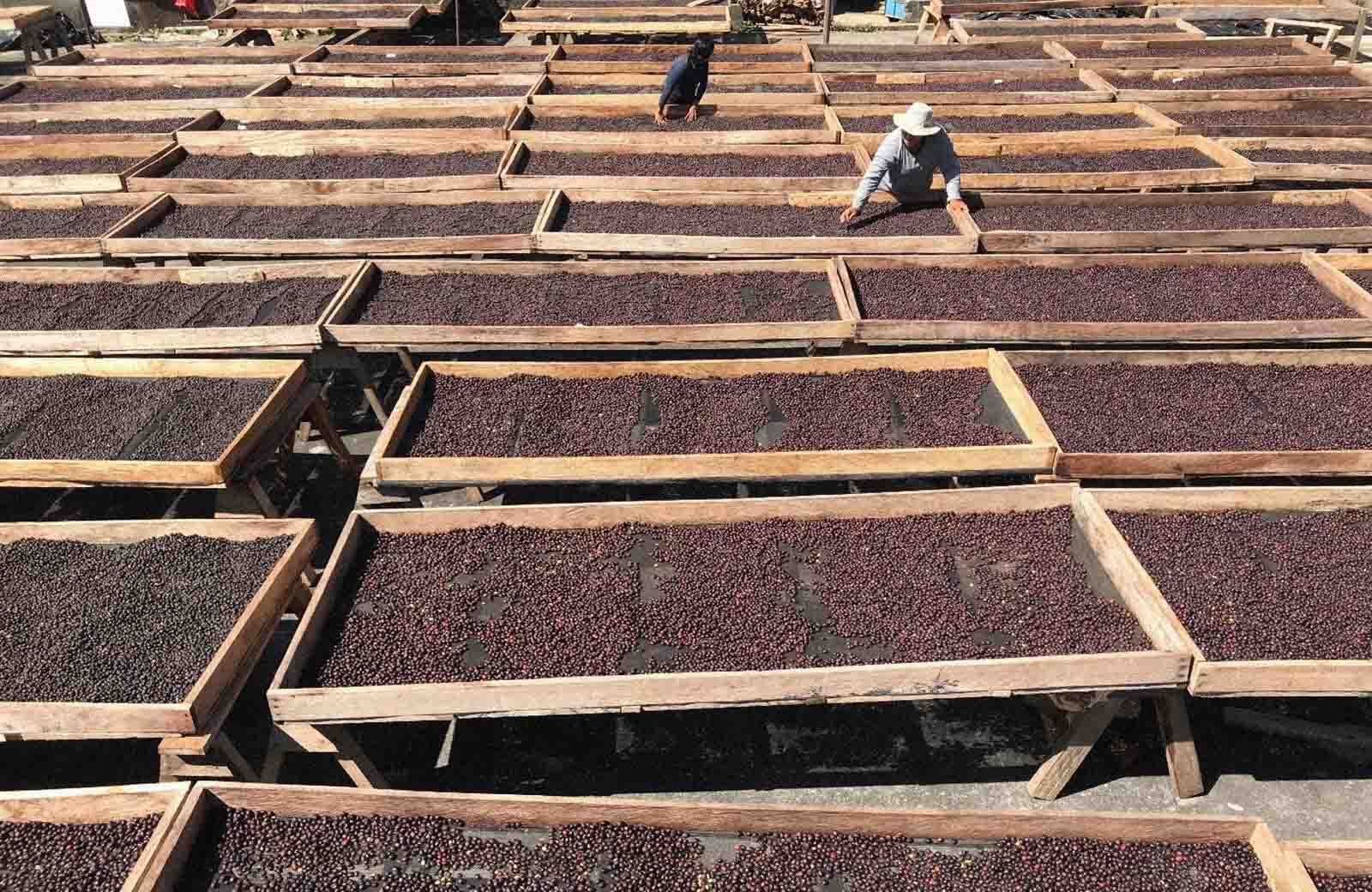Coffee processing is what happens after coffee cherry is picked. Processing methods have a direct effect on the quality of the brewed coffee. Different methods are used by producers for different reasons depending on origin and resources. Here are a few common methods for the coffees we source.
WASHED
Coffee cherry is picked and then the outer skin is removed from the seed or “bean.” That skin and the sticky mucilage is removed from the seed using a depulping machine. The seed is then washed in tanks of fresh water and fermented for a period to remove the remaining flesh. This process involves much work and is the most expensive for producers.
NATURAL / DRY PROCESS
Harvested cherry is laid out on raised beds or patios to dry in the sun. The cherry is turned regularly to avoid mold or rot. The dried cherry skin is then removed from the seed mechanically. This method is often used in places where water is scarce. The fermentation process imparts intense fruitiness. But if not done correctly, can result in undesirable musty or barnyard notes.
HONEY (SEMI-WASHED)
Similar to the natural/dry process. Coffee seed is separated from the cherry, but a percentage of fruit mucilage is left on the seed. The Spanish word ‘miel,’ or honey, refers to the sticky fruit left on the bean - no actual honey is involved. More common in Central America, but honey process is also being used in other origins. Variations such as red, white or black honey feature varying degrees of mucilage removed, with black honey having the least mucilage removed.

Image courtesy: Catalyst Trade

